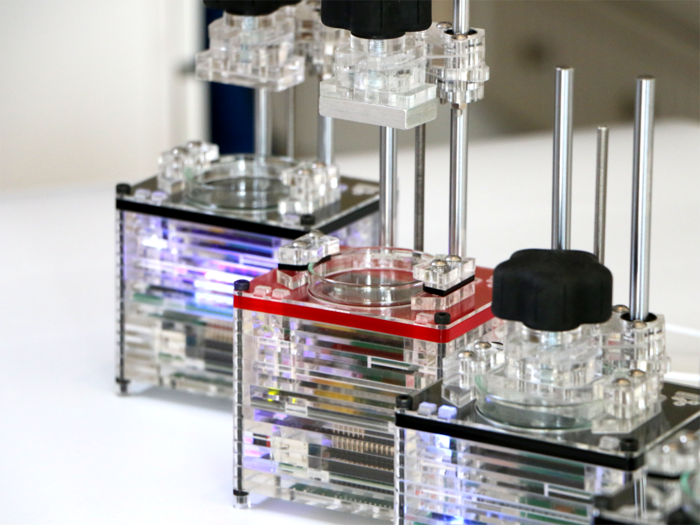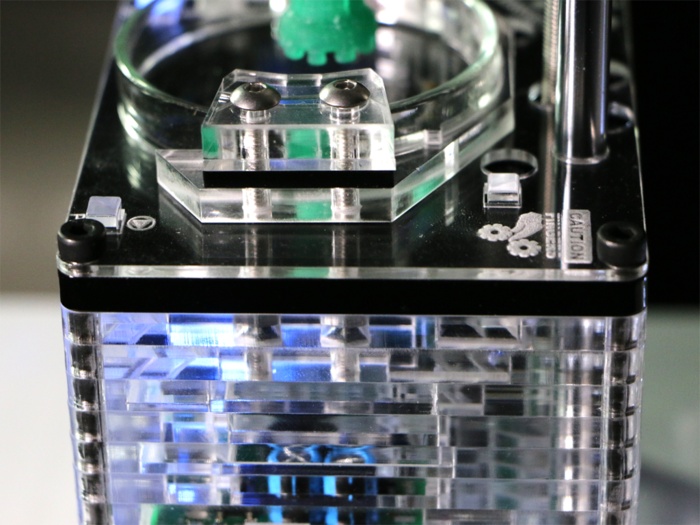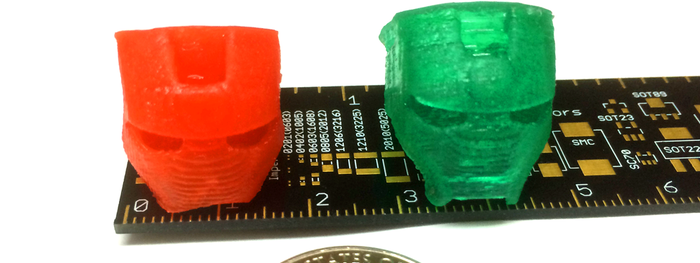
We’re looking at a very interesting new resin-based 3D printer, the iBox Nano.
The new machine, just launched on Kickstarter, is a personal 3D printer using UV-curable resin like many others, but this machine has a number of significant differences from the others. Here’s what we found interesting:
The iBox Nano uses UV-rated LED lights instead of standard DLP projector lighting with incandescent bulbs that burn out. The LEDs should last more or less forever and require no warm up time.
This 3D printer has an exceptionally small build volume compared to other recently announced resin-based personal 3D printers: 40 x 20 x 90mm. You might think this is dramatically small, but it really isn’t for this technology. Resin technology can 3D print in very fine resolution, much higher than other common 3D printing processes. This is useful for small objects; large objects simply do not require as fine a resolution. This machine is for printing small, highly detailed objects, such as jewelry. This also implies you’ll use limited quantities of expensive resin, so your costs may be reduced.
The iBox Nano is truly portable. Not only is it physically small and lightweight, it uses WiFi to connect instead of cabling. Even more surprising is that it can actually operate on battery power! The device’s LEDs and cool operation mean very limited energy consumption, especially compared to plastic extrusion machines that require high heat to melt plastic filament. iBox sells battery packs specifically for this purpose. It’s also very quiet when operating.
Resolution is the hallmark of resin-based 3D printers, and the iBox Nano is no slouch. While it offers an industry standard 328 micron (0.328mm) XY resolution, its layer resolution is astounding: 0.39 microns (0.00039mm)! This is the first personal device we’ve seen offering a layer size less than a single micron.
The machine is available at a very inexpensive price point: USD$189, although units at that price will likely run out by the time this post is published. No matter, they have additional price points ready to go at USD$229, USD$269 and higher.
If the machine works, it could put a dent into the market for industrial jewelry or dental 3D printers, which are typically priced far higher than this unit. In fact, the price of the iBox is close to the price of a material cartridge for some of these commercial machines.
So what could be wrong with this offering? Here’s some thoughts:
The build volume is small. Do not buy this machine if you have any intention of printing even medium-sized objects. But do buy it if you wish to print highly detailed small figurines or jewelry.
Will it work? We don’t know for sure until people get them, but the print samples pictured on the iBox site have a great look.
Will they survive? This is the big question. We’ve written previously on the perils of low-priced 3D printers, and the iBox Nano clearly falls into the pricing danger zone. To survive they’ll have to sell a great many units, but we see their campaign specifies 9,200 units. Perhaps they’ll hit the level required for survivability. The key is to offer a great product at a low price, and they may have done just that.
Via Kickstarter and iBox



